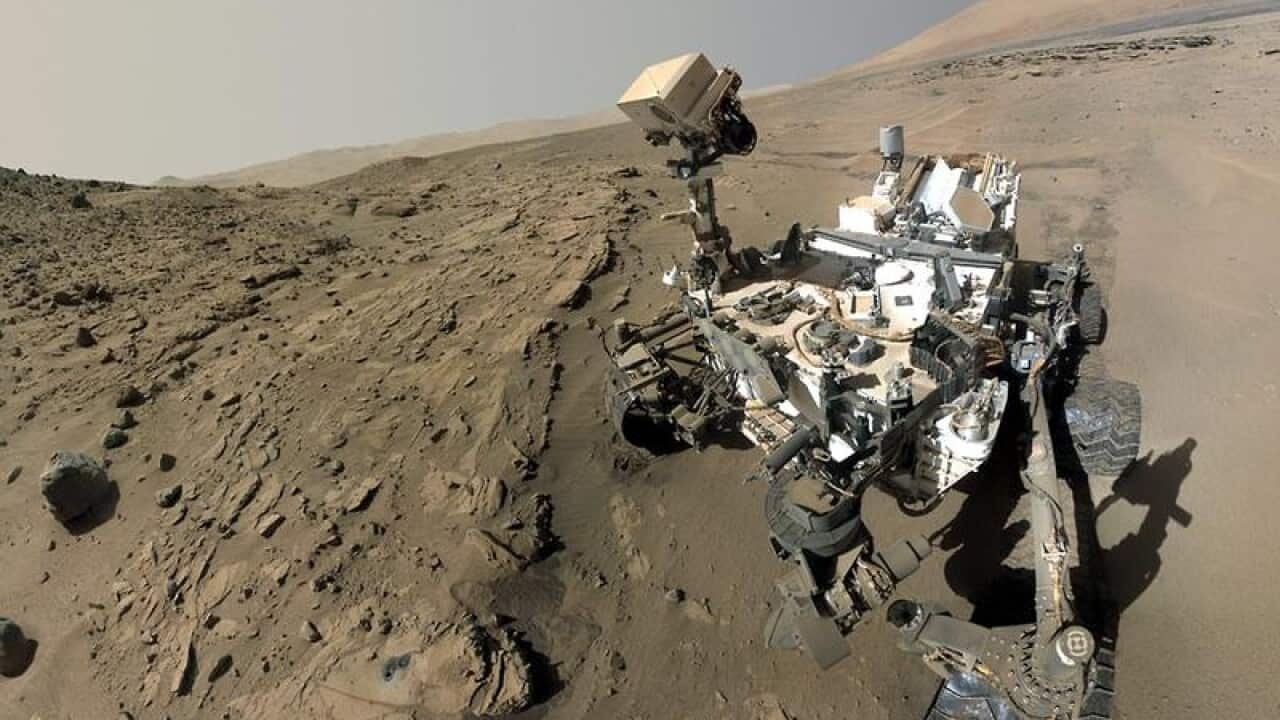Has there ever been life on Mars?
A group of Australian scientists hope they can help solve that question and are working with the US space agency NASA on its next Mars mission, planned for 2020.
NASA is sending another car-sized robot - known as a rover - to the red planet for a fresh survey of its rocky landscape.
The last rover to visit Mars was Curiosity, which landed on the planet's Gale Crater in 2012 and has since uncovered geological evidence of an environment that could have supported primitive life early in the planet's history.
It found evidence of a watery history on the slopes of Mount Sharp, with the presence of certain chemicals that suggest Mars had a much warmer and wetter climate in its past compared to its current frigid, harsh environment today.
Scientists from the University of NSW's Australian Centre for Astrobiology are helping NASA select a site for the 2020 rover to explore.
NASA's new rover will carry out seven experiments on Mars, one of which is being spearheaded by Australian field geologist Dr Abigail Allwood, making her both the first Aussie and woman to lead such a project.
The Planetary Instrument for X-Ray Lithochemistry - or PIXL - will identify chemical elements in great detail and take close-up pictures of rock and soil.
Dr Carol Oliver, deputy director at the Australian Centre for Astrobiology, says that information could indicate if there are any chemicals on Mars that typically support life, known as a biosignature.
"You can look at the relationship, that chemistry, to determine biosignatures in the soil, whether they're past or present," Dr Oliver told AAP.
Previous Australian research on how long life has existed on earth could also help NASA solve the puzzle of life on Mars.
UNSW researchers working in Western Australia's remote Pilbara recently provided the most convincing evidence yet that life existed on earth as far back as 3.5 billion years ago.
Dr Oliver said that finding was met with a lot of interest at NASA.
The Pilbara's environment is considered to be similar to that of the Gusev crater on Mars, which is one of the locations the 2020 rover may visit.
"All of this research has implications for this most profound question of all, and that is, are we alone in the universe?" she said.
The role Australians are playing in Mars exploration comes at a time when interest in the planet is high.
US President Donald Trump is among those to have spurred it on, signing a policy directive in December instructing NASA to send astronauts back to the moon - and on to Mars.
SpaceX spacecraft manufacturer Elon Musk has also sparked Mars interest with the ultimate goal of sending humans to live on other planets.
Dr Oliver describes this ambition as "very visionary and inspirational", but doesn't think it will actually happen, at least any time soon, because of the long time it takes to travel to and from Mars and its highly radiated surface.
"You could not live on the surface of Mars, even in a dome of the type that was in The Martian movie. You would be dead within 60 days from radiation," Dr Oliver said.
She said a scientific base below the surface could provide protection from radiation but other factors to consider would be what's in the water supply - if one is found - and the risks of disturbing any life.
"If there's life on Mars, in this pristine environment, you wouldn't want to be disturbing it until you actually understood it," she said.









